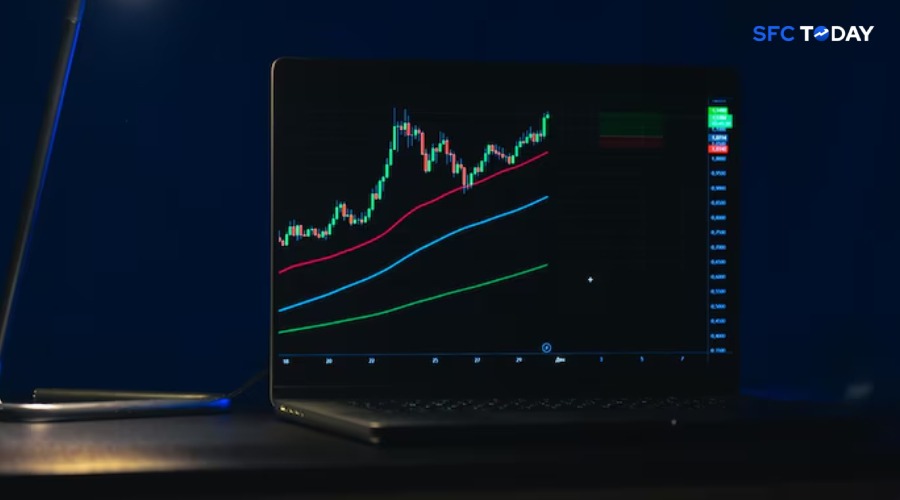Stable Gains Ahead: Best Dividend Stocks for Long-Term Investors
Investing in dividends is still among the most reliable ways to amass long-term wealth. Those investors seeking consistent income and protection of capital may find themselves seeking dividend-paying shares. Such holdings provide periodic pay-outs, hence becoming especially alluring in periods of volatile or uncertain market circumstances. Reinvested dividends over time can substantively enhance total returns and create a buffer for downturns in the market.
What Are Dividend Stocks
Dividend stocks are the shares of dividend-paying companies that give a part of their profits to investors periodically. Dividend payments are usually made every quarter and are made in cash, though some companies give dividends in the form of additional shares. Dividend-paying firms are usually established companies that are financially sound and are inclined towards providing steady shareholder returns.
Why Dividends Matter for Long-Term Investing
Dividends serve a double advantage. Dividends supply income and facilitate portfolio growth through reinvestment as well. Dividend payments in the past have historically accounted for a large proportion of total market return. At times of market downturn or when bear cycles drag on, dividends can also offset the falling prices of shares. To long-term investors, income predictability provides a better opportunity for financial planning and less dependency on price appreciation only.
Traits of Consistent Dividend Stocks
Healthy dividend stocks tend to have sound balance sheets, steady revenue flows, and robust cash flow. The companies tend to have low debts and belong to industries with inelastic demand. Another such signal is the payout ratio for dividends, which captures the share of earnings that has been distributed as dividends. A moderate ratio is indicative of stability, but too high a ratio may be a sign of stress or the absence of capacity for reinvesting.
Businesses that are designated as Dividend Aristocrats—those with at least 25 consecutive years of dividend growth—are frequently considered top performers. They balance long-term stability with a history of paying out shareholders independent of larger economic cycles.
Industry Groups Famous for Solid Dividend Performance
There are some industries that have come to be synonymous with consistent dividend payments. They are:
- Energy – Oil, gas, and utility companies tend to yield high returns because they are capital-intensive and have stable demand.
- Consumer Staples – Companies selling staple products like food, drinks, and household products usually have stable cash flows and strong margins.
- Healthcare – Drug and healthcare equipment manufacturers commonly pay dividends, supported by long product cycles and solid demand.
- Financials – Banks and insurance companies tend to pay dividends, especially those with diversified revenue streams and regulatory capital buffers.
These industries perform better during economic downturns than cyclical industries, making their dividends more reliable.
Companies with a History of Consistent Payouts
A number of companies have established dividend leader reputations. They are traditional companies that have kept or raised dividends during recessions, policy changes, and market upheavals. Their models allow for long-term profitability, enabling them to reward shareholders consistently over the long term.
Examples are well-known consumer brands worldwide, diversified industrials, and regulated price model utility providers. These companies tend to focus on shareholder returns through capital discipline and prudent financial management.
Risks and Issues in Dividend Investing
Although the advantages exist, dividend investing is not risk-free. Companies can suspend or reduce dividends when they are in financial trouble or facing economic downturn. Increasing interest rates can also make dividend yields less appealing than fixed-income options.
Portfolio concentrations in high-earning industries will subject portfolios to industry-specific threats. For example, energy dividends can be stressed by declining commodity prices or rule changes. Particular care has to be exercised to ascertain if dividends are reinforced by long-run business operations as opposed to shallow financial engineering on a short-time horizon.
Dividend Reinvestment and Compounding Growth
Dividend reinvestment enables the purchase of more shares, maximizing the compounding effect in the long run. It not only maximizes total return but also eliminates frequent trading needs. Most companies and brokerages provide dividend reinvestment plans (DRIPs) that automatically perform the process without charging transaction fees.
The magic of compounding can especially work in favor of younger investors with long investment time frames. Decades later, reinvested dividends can convert small investments into large fortunes, even in stocks that do moderately well.
Portfolio Diversification Through Dividend Stocks
Dividend stocks are used as a diversification tool to balance equities with growth and fixed-income investments. They tend to be a portfolio stabilizer, generating income when capital gains are restricted. A combination of high-growth, medium-growth dividend stocks in multiple sectors can add total return while reducing overall risk.
Combining global dividend shares can also lower domestic market risk. Blue-chip companies in the developed world similarly provide stable dividends, with often beneficial tax treatment in some locations.
Conclusion
Dividend investing remains highly attractive to those interested in long-term wealth building and income generation. Dividend-paying companies that provide stable and increasing dividends are often seen to exhibit financial discipline, business stability, and shareholder alignment. Carefully chosen and retained over time, dividend stocks represent a solid entry point to stable returns and long-term value amidst a changing market landscape.


